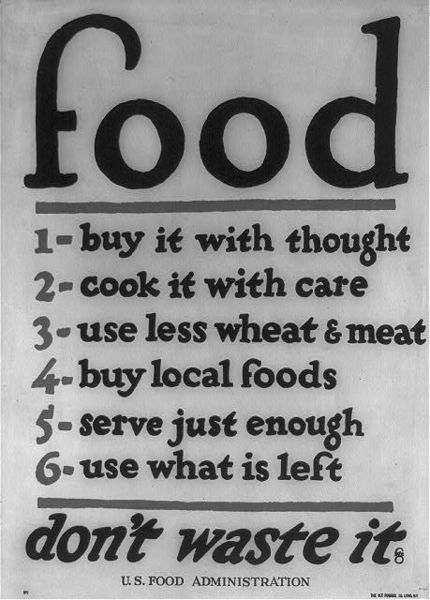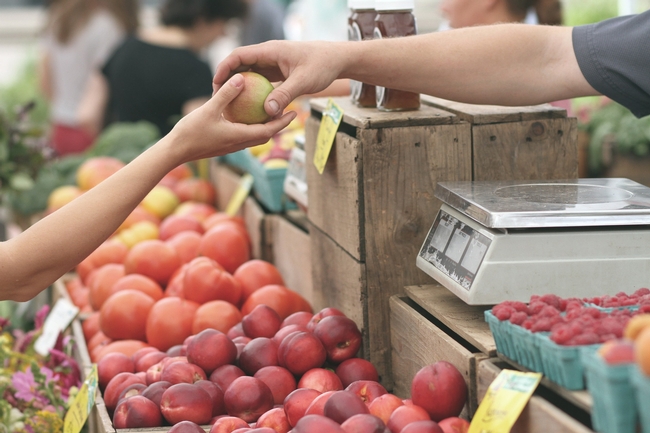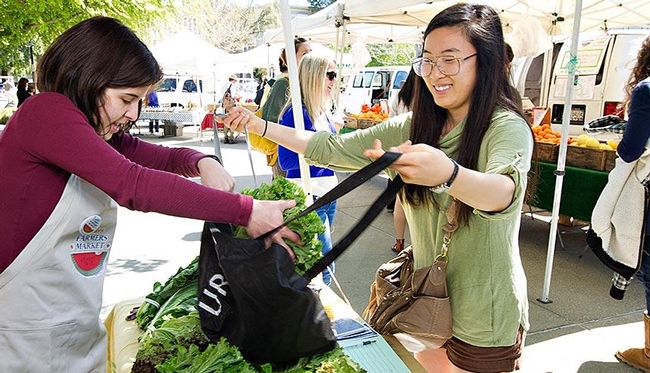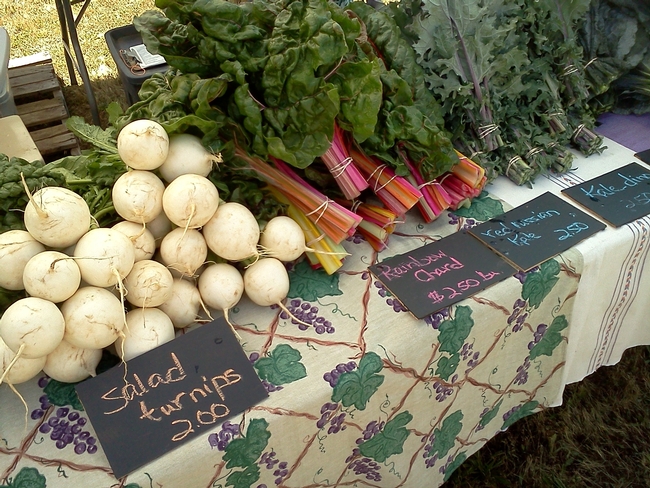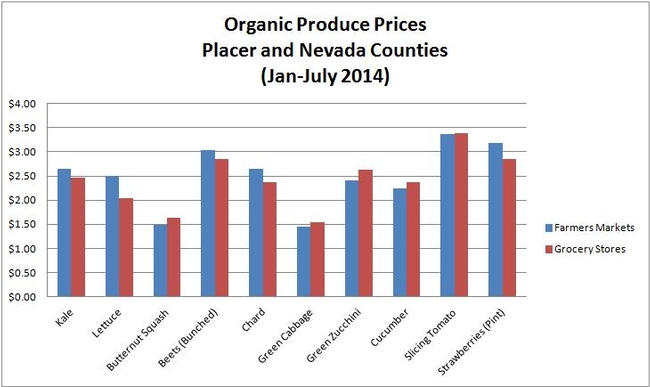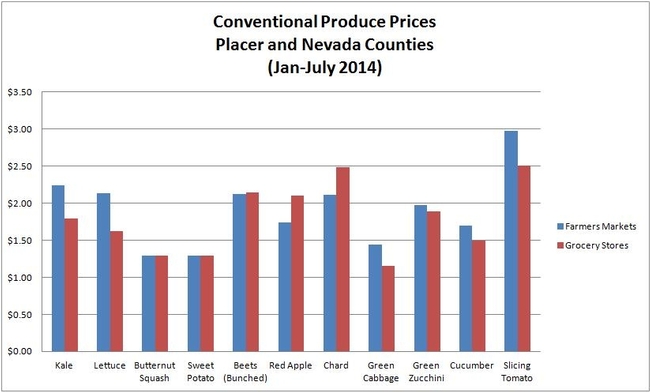Posts Tagged: Cindy Fake
'Local' food labels deceive customers
"The word 'local' is chic; it sells things," said Cindy Fake, UC Cooperative Extension advisor in Placer and Nevada counties. "So, it's used by everybody and anybody."
Fake said "local" has no clear definition and consumers are easily misled.
"They are likely to be deceived," she said. "Consumers are thinking one way and the marketers know that. They know consumers want local, so they say it's local."
The reporter also spoke with Gail Feenstra, deputy director of UC ANR's Sustainable Agriculture Research and Education Program.
"There is a huge diversity across states about what is local," Feenstra said
There is more transparency on fresh produce because it's easier for consumers to identify where it came from and recognize regional products on store shelves.
Feenstra said shoppers need to do their research.
Direct-marketing farms have double the regional impact
Sacramento-area farmers and ranchers who sell their products directly to consumers generate twice as much regional economic impact per dollar of output as do area food producers who don't engage in direct marketing, reports a UC Davis agricultural economist and a team of UC Cooperative Extension researchers.
The newly released study of the four Sacramento region counties of El Dorado, Placer, Sacramento and Yolo found that direct-marketing food producers had a regional output multiplier of 1.86 compared to just 1.42 for producers not involved in direct marketing.
Direct-marketing channels include farmers markets, roadside farm stands and community-supported agriculture programs that provide consumers with regular deliveries of farm products.
“The direct marketers make up a relatively small part of the Sacramento region's agricultural sector, but this study demonstrates that these food producers generate both economic and qualitative benefits for the region,” said study leader Shermain Hardesty, a UC Cooperative Extension specialist in the UC Davis Department of Agricultural and Resource Economics.
“It's important that the economic contributions of direct-marketing farmers and ranchers be taken into consideration so that regional policies can be enhanced to support and nurture the growth of these food producers,” Hardesty said.
The regional economic impacts identified in the study are threefold: revenue received directly by the agricultural producer; a ripple effect when the food producer purchases inputs in the region; and a secondary ripple when the producer and the suppliers of goods and services to the producer, in turn, spend more money in the region on household goods and services.
The report, along with separate economic impact reports specifically for El Dorado, Placer and Yolo counties, is available online.
Sacramento region direct marketers
In the four-county Sacramento region, direct-marketing food producers are a relatively small segment of the total agricultural sector, accounting for 19 percent of the region's farms and only 4 percent of its agricultural production.
The direct-marketing farm operations tend to be smaller and more labor-intensive, and source more of their inputs locally than do nondirect-marketing operations in the area.
The new study was based on economic information gathered from 88 local farmers and ranchers, including 31 vegetable farmers, 48 orchard or vineyard growers and nine livestock producers, each of whom generated at least $1,000 in annual sales from marketing directly to consumers.
After the data were collected, they were incorporated into an economic modeling program to estimate the economic impacts of producers engaged in direct marketing.
Study highlights
Other findings from the report include:
• Sacramento region direct-market producers averaged just $164,631 in one year of sales compared to $568,105 for those not engaged in direct marketing.
• Seventy-three percent of the direct marketers also sold through wholesale channels.
• Overall, the direct-market producers generated 44 percent of their total revenues through direct-marketing channels, 55 percent through wholesale channels and 1 percent through commodity markets.
• For every $1 million of output, the direct-market producers generated a total of 31.8 jobs in the Sacramento region while the nondirect-market producers generated only 10.5 jobs.
• Direct marketers purchased 89 percent of their inputs within the region while the nondirect-market producers purchased 45 percent of their inputs in the region. This local sourcing of inputs was the primary factor responsible for the direct-market producers having a greater economic impact on the region than nondirect-market producers.
Collaborators and funding
Hardesty collaborated on the study with Libby Christensen, Erin McGuire and Gail Feenstra, all of UC Davis; and Chuck Ingels, Jim Muck, Julia Boorinakis-Harper, Cindy Fake and Scott Oneto, all with the UC Cooperative Extension.
Funding for the study was provided by the University of California Division of Agriculture and Natural Resources Competitive Grants Program.
Farmers market prices compare well with the supermarket produce aisle
Many shoppers believe they can buy cheaper produce at supermarkets than at local farmers markets. A new UC Cooperative Extension study dispels that common misperception.
In Placer and Nevada counties, UCCE received a CDFA Specialty Block Grant to encourage consumers to eat more fruits and vegetables and support the local agricultural industry by buying the produce from them. The project led to the creation of the “Eat Local Placer Nevada” campaign.
“Buying locally grown products supports local farmers and ranchers and it keeps land in agriculture,” said Cindy Fake, UCCE farm advisor in Placer and Nevada counties. “Simply put, it's the right thing to do.”
To give consumers extra incentive to eat local, the group launched a seven-month study to compare prices at farmers markets and grocery stores. Volunteers and staff collected price data at four farmers markets and six grocery stores from January to July 2014. Specials and sale items were not part of the study. The data suggests that organic produce at farmers markets is priced about the same as organic produce at grocery stores.
In terms of conventional produce, grocery stores had cheaper prices on 6 out of 11 items; however, consumers would still save money picking up red apples, beets and chard at the farmers markets. The cost of conventional butternut squash and sweet potatoes was virtually equal at the two venues.
“Contrary to many consumers' perception, farmers market prices are competitive with regular supermarket prices,” Fake said. “Some prices are slightly higher, some slightly lower, but they are in the same range. “
However, there are other factors shoppers should keep in mind when deciding to buy supermarket produce or fruit and vegetables grown by their neighboring farmers.
“Produce at the farmers market is sold the same day or the day after it is harvested,” Fake said. “Because of that, its shelf life is two to three times longer than what is found in the supermarket. And because it is so fresh, you have a higher nutrient content and it will taste better.”
Fake said experts believe buying local also supports the local economy. She is collaborating on a project led by Shermain Hardesty, UCCE specialist in the Department of Agricultural and Resource Economics at UC Davis, to document the economic impact of local food systems in Placer, El Dorado, Sacramento and Yolo counties. The researchers will gather data about farmers' purchases of inputs and local sales of produce.
“This project will provide science-based evidence to guide public policy and program design aimed at supporting local farmers and local food systems into the future,” Fake said.
The study – titled Measuring the Impact of Local Food Marketing on the Local Economy – is supported with a $226,048 grant from the UC Division of Agriculture and Natural Resources.
Methyl iodide hearing prompts news coverage
Senate Majority Leader Dean Florez held a hearing of the Food and Agriculture Committee last Thursday to review the Department of Pesticide Regulation's tentative decision to approve the pesticide methyl iodide.
The hearing prompted wide news coverage over the weekend, including a story in the New York Times that said the discussion in California over methyl iodide has implications beyond the Golden State. The U.S. EPA has indicated DPR's decision may influence federal policy on the use of the pesticide nationwide.
The Times article reported that, at the hearing, members of the scientific committee that had reviewed methyl iodide for DPR - and suggested it not be registered - said the state’s decision to approve its use was made using "inadequate, flawed and improperly conducted scientific research."
“This is without question one of the most toxic chemicals on earth,” John Froines, UCLA professor of environmental health sciences, was quoted. “You don’t register a chemical when you don’t have the necessary information you need.”
Carolyn O'Donnell, the spokeswoman for the California Strawberry Commission, said the pesticide would be deployed by growers safely and only when needed.
“The 500-plus growers of strawberries in the state are largely family farmers who live where they grow,” O’Donnell was quoted in the Times. “When they make decisions about how and where they farm, they make those decisions with the health and safety of workers and the community in mind.”
An article in the Ventura County Star said stringent regulations would deter growers from using the chemical even if it were registered. Some proposed restrictions are a half-mile buffer zone around schools, hospitals and nursing homes, limiting application to protect groundwater and limiting the number of acres that can be treated.
The Roseville Press-Tribune said field fumigation with methyl iodide would be rare in Placer County.
“There is less need for pesticides to manage strawberry pests because we have fewer species of pests and lower pest populations, partly because we lack the intense cultivation of strawberries as on the Central Coast and farms are scattered throughout the county,” the article quoted Cindy Fake, a UC Cooperative Extension farm advisor for Placer and Nevada counties.
The Monterey County Herald ran a commentary about the issue written by State Assemblyman Bill Monning.
"It is unconscionable for DPR to proceed with the registration of methyl iodide when its own scientists have presented unequivocal evidence of extreme risk and insufficient data collection," Monning wrote.
The public comment period on the pending approval of methyl iodide ends on June 29.

